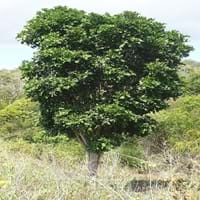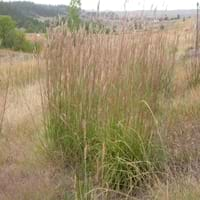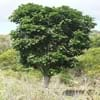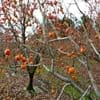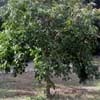Life Span
Perennial
Perennial
Origin
Australia
North America, United States, Northeastern United States, Mid-Atlantic United States, Southeastern United States, North-Central United States, Central United States, South-Central United States, Southwestern United States, Texas, Canada, Mexico
Types
Not Available
Not Available
Habitat
Littoral rainforest, Near Estuaries
meadows, Prairies, Riverbanks, Roadsides, Woods
USDA Hardiness Zone
9-15
2-7
Sunset Zone
H1, H2, 16, 17, 18, 19, 20, 21, 22, 23, 24
1a, 1b, 2a, 2b, 3a, 3b, 4, 5, 6, 7, 8, 9, 14, 15, 16, 17, 18, 19, 20, 21, 22, 23, 24
Habit
Spreading
Clump-Forming
Flower Color
White
Purple
Flower Color Modifier
Bicolor
Bicolor
Fruit Color
Orange, Light Yellow, Orange Red, Black
Not Available
Leaf Color in Spring
Green, Light Green, Yellow green
Green
Leaf Color in Summer
Green, Yellow green
Light Green
Leaf Color in Fall
Green, Yellow green
Blue Green, Burgundy, Bronze
Leaf Color in Winter
Green, Yellow green
Tan, Sandy Brown
Leaf Shape
Pinnate
Grass like
Plant Season
Spring, Summer, Fall, Winter
Summer, Fall, Winter
Sunlight
Full Sun, Partial Sun, Partial shade
Full Sun, Partial Sun
Type of Soil
Clay, Loam, Sand
Loam, Sand
The pH of Soil
Acidic, Neutral, Alkaline
Neutral, Alkaline
Soil Drainage
Average
Well drained
Bloom Time
Early Spring, Spring
Late Summer, Early Fall, Fall
Tolerances
Frost, Pollution, Salt
Not Available
Where to Plant?
Ground
Container, Ground, Pot
How to Plant?
Seedlings
Seedlings
Plant Maintenance
Medium
Medium
Watering Requirements
Reduce water once established, Requires regular watering, Requires watering in the growing season
Average Water Needs, Do Not over Water, Medium
In Summer
Average Water
Lots of watering
In Spring
Less Watering
Moderate
In Winter
Less Watering
Average Water
Soil pH
Acidic, Neutral, Alkaline
Neutral, Alkaline
Soil Type
Clay, Loam, Sand
Loam, Sand
Soil Drainage Capacity
Average
Well drained
Sun Exposure
Full Sun, Partial Sun, Partial shade
Full Sun, Partial Sun
Pruning
Prune if you want to improve plant shape, Remove dead or diseased plant parts
Remove damaged leaves, Remove dead branches, Remove dead leaves, Remove dead or diseased plant parts
Fertilizers
slow-release fertilizers
All-Purpose Liquid Fertilizer
Pests and Diseases
Borers
Red blotch
Plant Tolerance
Frost, Pollution, Salt
Not Found
Flowers
Insignificant
Yes
Flower Petal Number
Single
Single
Fragrant Bark/Stem
Yes
No
Foliage Texture
Medium
Medium
Foliage Sheen
Glossy
Matte
Attracts
Birds, Butterflies
Birds, Butterflies
Allergy
Skin rash
Not Available
Aesthetic Uses
Beautification, Landscape Designing, Showy Purposes
Ground Cover, Landscape Designing, Showy Purposes
Beauty Benefits
Not Available
Not Available
Edible Uses
No
Insignificant
Environmental Uses
Air purification, Food for birds, Nesting sites for birds, No fertilizer, pesticides, or herbicides needed, Prevent Soil Erosion, Shadow Tree, Shelter for wildlife, Used to establish native woodland
Air purification, Food for animals, Prevent Soil Erosion
Medicinal Uses
No Medicinal Use
Not Available
Part of Plant Used
Tree trunks
Leaves, Stem
Other Uses
Used as firewood, Wood is used fore making tools, Wood is used in construction
Decoration Purposes, Food for animals
Used As Indoor Plant
No
Insignificant
Used As Outdoor Plant
Yes
Yes
Garden Design
Shade Trees, Tropical
Cutflower, Dried Flower/Everlasting, Mixed Border, Screening / Wind Break, Wildflower
Botanical Name
CUPANIOPSIS anacardioides
ANDROPOGON gerardii
Common Name
Tuckeroo, Green leaved tamarind
Big Bluestem, Turkey Foot
In Hindi
Carrotwood ट्री
Big Bluestem grass
In German
Carrotwood Baum
Große Bartgras
In French
Carrotwood Arbre
Barbon de Gérard herbe
In Spanish
Árbol carrotwood
hierba andropogon grande
In Greek
Carrotwood Δέντρο
Big BLUESTEM γρασίδι
In Portuguese
Árvore Carrotwood
Vetiver grande grama
In Polish
Carrotwood Drzewo
Big Bluestem trawa
In Latin
Carrotwood ligno
Big bluestem herba
Phylum
Magnoliophyta
Magnoliophyta
Class
Magnoliopsida
Lillosida
Family
Sapindaceae
Poaceae
Genus
Cupaniopsis
Andropogon
Clade
Angiosperms, Eudicots, Rosids
Angiosperms, Commelinids, Monocots
Tribe
Not Available
Not Available
Subfamily
Sapindoideae
Not Available
Number of Species
Not Available
Not Available
Season and Care of Carrotwood Tree and Big Bluestem
Season and care of Carrotwood Tree and Big Bluestem is important to know. While considering everything about Carrotwood Tree and Big Bluestem Care, growing season is an essential factor. Carrotwood Tree season is Spring, Summer, Fall and Winter and Big Bluestem season is Spring, Summer, Fall and Winter. The type of soil for Carrotwood Tree is Clay, Loam, Sand and for Big Bluestem is Loam, Sand while the PH of soil for Carrotwood Tree is Acidic, Neutral, Alkaline and for Big Bluestem is Neutral, Alkaline.
Carrotwood Tree and Big Bluestem Physical Information
Carrotwood Tree and Big Bluestem physical information is very important for comparison. Carrotwood Tree height is 610.00 cm and width 910.00 cm whereas Big Bluestem height is 38.10 cm and width 152.40 cm. The color specification of Carrotwood Tree and Big Bluestem are as follows:
Carrotwood Tree flower color: White
Carrotwood Tree leaf color: Green, Light Green and Yellow green
Big Bluestem flower color: Purple
- Big Bluestem leaf color: Green
Care of Carrotwood Tree and Big Bluestem
Care of Carrotwood Tree and Big Bluestem include pruning, fertilizers, watering etc. Carrotwood Tree pruning is done Prune if you want to improve plant shape and Remove dead or diseased plant parts and Big Bluestem pruning is done Remove damaged leaves, Remove dead branches, Remove dead leaves and Remove dead or diseased plant parts. In summer Carrotwood Tree needs Average Water and in winter, it needs Less Watering. Whereas, in summer Big Bluestem needs Lots of watering and in winter, it needs Average Water.
